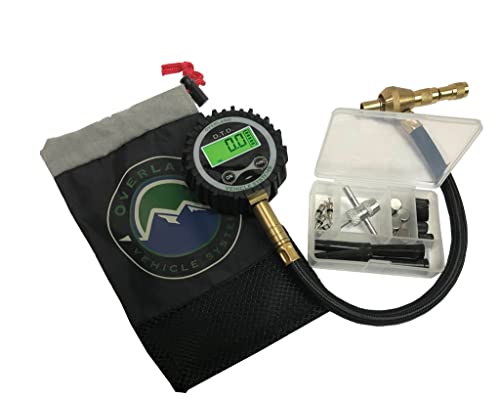Mud Bogging 101: Beginner’s Guide to Conquering Muddy Trails
Mud Bogging 101: A Beginner’s Guide to Conquering Muddy Trails
Mud looks fun until you’re axle-deep inventing new four-letter words. This guide keeps it light, safe, and step-by-step: how to read muddy sections, pick a line, set tire pressures, keep momentum, and what to do the moment you feel traction slip. We’ll finish with recovery basics, drills, and a starter mud kit you can build over time.
Off-Roading Skills › Mud & Ruts
Tried-and-true kit for mud days—tires, traction boards, ropes, shackles, compressors, and more.
Step 1 — Assess the mud (30-second scan)
- Depth & bottom: Walk shallow puddles; probe deeper sections with a stick. Feel for firm base vs. porridge. If you can’t stand easily, your tires won’t either.
- Entry/exit ramps: The exit is the hardest part. If the far bank is undercut or slick clay, plan a cleaner line or build a ramp with branches/boards.
- Ruts tell a story: Look where others exited or got stuck. Fresh, deep ruts = soft base; old, dry ruts = hard pan below.
- Depth check on your rig: Know your air intake height and wading limits. Muddy water can hide holes, stumps, and tossed recovery trash—never guess.
- Plan B: If the bypass is legal and kinder to the trail, take it. Spinning craters isn’t “sending it,” it’s ticket bait.
Step 2 — Vehicle setup (5 minutes)
- Tire pressure: Air down to increase footprint. Typical starting points:
- All-terrain tires: 18–22 psi
- Mud-terrain tires: 16–20 psi
- Heavy rigs may need +2–4 psi. Watch for de-beads on very low pressures.
- 4WD mode: 4H for shallow, flowing sections; 4L for technical, deep, or slow crossings.
- Traction aids: Start with aids on. If the system kills momentum, try sand/mud mode or momentarily reduce traction control on very soft ground.
- Stow loose gear: Nothing should become a projectile if you lurch.
- Spotter & comms: Windows down, radio check, agree on “Stop” and “Hold” signals.
Step 3 — Driving technique (momentum, not mayhem)
- Set and hold: Choose a steady, low throttle before the bog; avoid mid-mud shifts or big changes.
- Create bite: Aim for the crown between ruts; if you must use a rut, keep one tire high to maintain cross-axle traction.
- Steer small: Sawing the wheel breaks the front’s grip and plows the tread. Think gentle corrections.
- Bow wave in water-mud mix: Enter slowly to make a small bow wave and keep it ahead of the grille.
- Eyes on the exit: Commit smoothly; momentum carries you up the far bank.
When you first feel yourself getting stuck
- Stop early. If the revs rise and speed drops, you’re digging soup bowls.
- Reset: Back up in your own tracks while you still can. Air down 2–4 psi more.
- De-mire the tires: Clear mud in front of the tires with a shovel; build a small ramp with branches/boards.
- Boards in, crawl out: Push traction boards tight under the leading edges; select low gear and idle onto them.
- Change the line: A tire on firmer ground beats two tires in pudding.
Recovery basics for mud
- Tow strap (low stretch): For gentle, steady pulls with minimal run-up.
- Kinetic rope (15–30% stretch): Stores energy for a controlled “yank” on very soft ground. Needs space, training, and a clear exclusion zone.
- Always use rated recovery points and shackles. No tow balls. Ever.
- Anchor to a healthy tree with a tree-saver; add a line damper mid-span.
- Short, controlled pulls; pause to rebuild ramps/boards under tires.
- Use a snatch block to correct poor angles or halve the load.
- One coordinator in charge; everyone else well clear (≥1.5× line length, off to the side).
- Gloves, eye protection; no straddling lines or stepping over ropes.
- If voices are loud, stop. Reset the plan.
Practice drills (10–20 min each)
- On a muddy but safe lane, pick a landmark exit.
- Do three passes at the same throttle; note which line carries best.
- Repeat with −2 psi, then −4 psi. Write down what changed.
- Find shallow ruts. Practice keeping one tire on the crown, one in the rut.
- Make fingertip steering corrections only. Feel cross-axle traction improve.
- Deliberately bog lightly. Stop early.
- Dig, place boards tight to tires, idle out. Reset and repeat from a worse angle.
After-the-Mud care (save parts, save money)
- Rinse brakes, radiators, skid plates, and radiator fins ASAP; clay packs hold heat.
- Check diff/transfer case breathers; inspect for milky fluids after deep crossings.
- Torque critical suspension/steering bolts; mud rides can loosen hardware.
- Clean recovery gear and re-spool winch under light tension.
Recommended gear for muddy trails
These match items we’ve already featured—swap any links/images you prefer. Buttons include proper rel="nofollow sponsored noopener noreferrer".

Traction Boards (Pair)
Fastest, safest way to get rolling when tires cake up.
✅ Check Price
Kinetic Recovery Rope
Gentle “yank” for deep pudding—requires space & training.
✅ Check Price
Rated Tow Strap
For controlled, steady pulls when a snatch isn’t needed.
✅ Check Price
Soft Shackles (Rated)
Light, strong, easier on gear than steel.
✅ Check Price
12k Synthetic Rope Winch
Your “break-glass” option for deep bogs and bad exits.
✅ Check Price
Tire Pressure Gauge
Airing down is the #1 traction upgrade—measure it.
✅ Check PriceDisclosure: Some links/images above go to Amazon. As an Amazon Associate we may earn from qualifying purchases—this never affects our editorial verdict.
Next in the mini-series: Don’t Get Stuck! Pro Tips for Navigating Deep Ruts (steering into the rut wall, spotter use, high-center recovery).




Comments